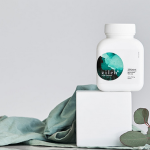


Have you heard of Mask-ne ?
Neither had we! Until we’ve all started experiencing it due to the corona virus pandemic!
So let’s talk about why people are starting to experience acne and skin irritation due to wearing masks lately …
Acne is a condition that is caused when the pilosebaceous unit (follicles) in the skin become blocked, inflamed, and bacterial hotspots. It can range from a few pimples to severe cases. There are many factors that contribute to causing acne such as hormones, environment, cosmetics and lifestyle.
Although absolutely necessary, mask wearing exposes your skin to many of these factors which acne could thrive off, such as moisture, heat and bacteria. Add makeuo, friction and irritation in the mix and you have yourself an even worse case of ‘iso-skin’ !
So how can we help at Skin Revival? …
HOMECARE! As your skin changes, your homecare may also need to slightly change. We offer product consultations to prescribe the correct product to you. Ensure you are both cleansing and hydrating your skin daily, especially after a day of mask wearing to remive bacteria! There are some serums that can repair irritation and work on un-clogging the pores also.
DON’T TOUCH! Touching your skin adds so much unwanted bacteria. Don’t be tempted to pick or squeeze either, instead, look into a
TREATMENT that can help with acne and inflammation such as …
Prolonged wearing of masks and goggles can cause adverse skin reactions such as acne, contact dermatitis and pressure effects, as well as exacerbating any underlying skin conditions.
BEFORE DONNING PPE
Keep your facial skin care regime simple
Use a mild skin cleanser (or soap substitute) or micellar water at the beginning and end of each day
DURING WEAR
MANAGEMENT OF SPECIFIC PROBLEMS
Contact Dermatitis
Increased temperature, moisture and friction cause skin barrier damage and make the skin more susceptible to irritation. This may cause mild redness and dryness where the mask touches the skin. Allergy from masks is very uncommon. Irritant contact dermatitis is nearly always the cause.
Acne
Acne can be caused by occlusion from masks blocking oil glands and hair follicles. Sebum (oil) will be enhanced by increased temperature in the facial environment.
PRESSURE INJURIES
Pressure from the mask can cause skin indentation
ITCHY SKIN
May be caused by various skin conditions or may be simply due to friction from the mask. Itching from longer loose fine fibres on the side of the mask has occurred in some cases. These can be identified with a magnifier and side light and snipped off. Dry skin is itchy skin.
DRY SKIN
Increased temperature, moisture and friction cause skin barrier damage. This may subsequently lead to dry skin.
PRESSURE URTICARIA (Hives)
Rarely, urticaria may be caused by pressure from masks, particularly in people with underlying dermographism (where there is histamine release causing skin whealing in response to light pressure.)
Information contained in this document is provided by The Australian Collage of Dermatologists